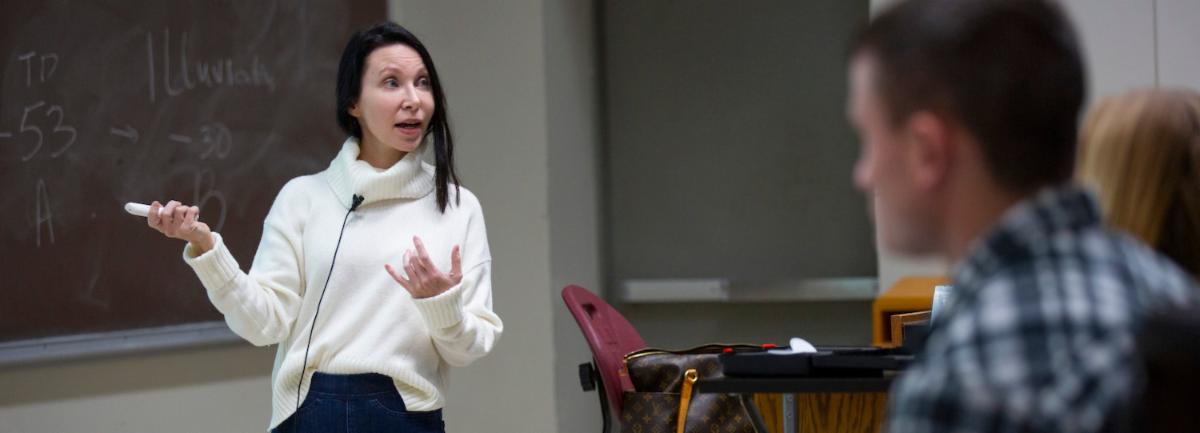
(May 1, 2020) As virtual instruction evolves from the spring semester to summer, it is appropriate to review the best practices for delivering online education, in particular how faculty interact with students. Students’ relationships with instructors is a hallmark of the Iowa State academic experience. This document shares new federal guidelines regarding interaction between instructors and students, and offers tips and resources to help students achieve course outcomes. Updated guidance will be provided for Fall 2020 virtual courses prior to the start of fall semester.
Each course should contain at least 1 hour of active faculty-student interaction per credit hour, per week - ideally spread out during multiple sessions. For summer courses that meet in a condensed timeframe additional interaction is recommended to support student learning during the accelerated course pace.
This interaction should include at least two of the following:- Direct instruction (synchronous interactive sessions);
- Interactive feedback regarding a student’s coursework (examples below);
- Responses to student questions about course content;
- Facilitated group discussions about course content or competencies;
- Other instructional techniques that provide similar engagement to an in-class setting.
What are some ways in which faculty can meet these requirements?
- Hold online office hours during different, regularly scheduled time periods in which you have an open Zoom, Webex, etc. video conference tool that students can join. (Use the Virtual Student (Office) Hours guide)
- Activate ‘Canvas Chat’ for immediate feedback. Use it to provide quick, text-based consultations, as well as to post course-wide announcements, give feedback on cumulative test results, or explain a confusing concept students are struggling with.
- Ask students to comment on a subject-related video using the commenting feature in ‘Studio’.
- Use the PIAZZA app in Canvas to easily set up a Q&A format.
- Create peer-review assignments and monitor the quality of peer feedback.
- Use the ‘Message Students Who’ feature in Gradebook to give substantive feedback to groups of students who performed at different levels. Students included in the groups will not be able to tell who else is receiving the message.
- Create multiple practice quizzes and example problem sets that students can complete in their own time, then spend part of your synchronous time demonstrating problems students had the most difficulties solving, as determined by the Canvas Quiz Statistics. (Use the Quizzes and Exams strategies guide).
Do simple adjustments to traditional teaching methods qualify as “substantive interaction” between the student and instructor?
- No. Posting a video of pre-recorded lectures or providing lecture materials online does not count as substantive interaction. To be considered as such, the instructor might:
- Require students to watch the lecture ahead of time and then participate in a live text or video chat.
- Include self-assessment questions for a set of pre-recorded lectures. Use these assessments to guide content covered in an office hour session based on students’ performances.
- Simply assigning a grade to an assignment does not constitute interactive feedback. The instructor should also do one or more of the following:
- Provide each student with comments unique to their submission and which refer back to the specific materials contributing to this concept;
- Utilize mastery paths in Canvas to help students explore additional materials related to the topic;
- Summarize common issues students are experiencing using a video, announcement, email or discussion, and distribute to the whole class.
Best Practices for Online Course Design
- In an online format, students lack the structure of “going to class.” You can help structure the student learning process by ensuring that your course learning objectives, content delivery, and assignments are aligned and all assignment due dates are posted at the start of the semester.
- Ensure that your course layout contains clear and consistent navigation.
- Make sure that your course is accessible.
- Structure your course content in a Module Format and ensure that each module starts by introducing students to the module learning objectives and ends with an assessment to help students gauge their understanding of concepts covered.
- Use a variety of methods to deliver course content including: mixing short discussions, collaboration exercises, video clips, and hands-on exercises with text or brief video lectures. To get started, use CELT’s Teaching with Technology page.
- Be mindful of the amount of work you assign to students. Sometimes, efforts to increase engagement inadvertently significantly add to students’ workload. (CELT suggests that One way to determine the workload is to use the Rice University Course Workload Estimator web tool.)
- CELT has detailed a number of online instructional strategies and engagement strategies to help you involve students in the learning process.
- Create a feeling of community through acknowledging student contributions, providing positive reinforcement, sharing personal experiences, helping students share ideas with peers, encourage networking.









